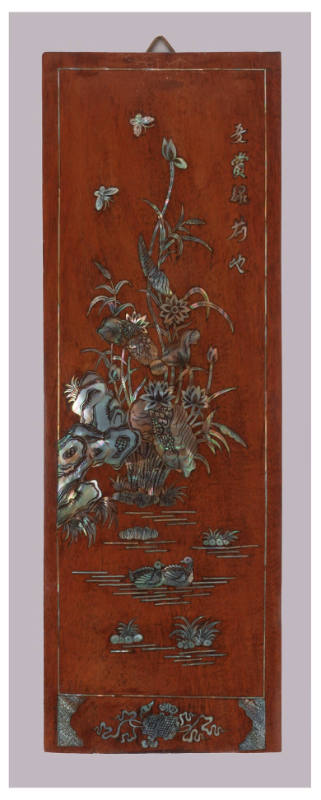
Object Details
Artist
Louis Comfort Tiffany
Date
ca. 1921
Medium
Green overlay on yellow cameo glass
Dimensions
Height: 6 7/8 inches (17.5 cm)
Credit Line
Gift of Louis Comfort Tiffany through the courtesy of A. Douglas Nash
Object
Number
57.105
BRIEF DESCRIPTION
This is a Tiffany vase of cameo carved glass. Notice how the green leaf designs(…)
BRIEF DESCRIPTION
This is a Tiffany vase of cameo carved glass. Notice how the green leaf designs are slightly raised above the surface.
WHERE WAS IT MADE?
Tiffany glass was made at the Tiffany Glass Furnaces in Corona, located in Queens, New York.
WHO WAS THE ARTIST?
Louis Comfort Tiffany was the eldest son of Charles L. Tiffany, founder of Tiffany & Company, the New York jeweler. Tiffany was trained as a painter, studying with both George Inness and Samuel Coleman in New York and Leon Bailly in Paris. He eventually turned his attention to decorative arts and began experimenting with glass-making techniques in 1875. After success with stained glass windows and mosaics, Tiffany established the Tiffany Glass Company in 1885 and began devoting production to one-of-a-kind blown glass art objects. He soon became one of America’s most prolific designers, providing furniture, wallcoverings, textiles, jewelry and glass to some of society’s most important citizens.
HOW WAS IT MADE?
Cameo glass is glass that is made from one color that has been covered by a second or even third layer of contrasting colors, also called casing, flashing, or overlaying. In this vase, a base of yellow glass has been flashed with green glass. The outer layer is then acid-etched, carved, or engraved, producing a design that is raised from the surface of the vessel. Cameo glass dates back to ancient Roman times and it became popular in England in the 19th century when modern technology and methods eased cameo glass production.
WHY DOES IT LOOK LIKE THIS?
Tiffany believed that nature was the true source of artistic inspiration. He was fascinated by the colors found in flowers and plants. He tried to incorporate nature into his designs, often as realistically as possible, showing flowers and plants in various stages of bloom.












